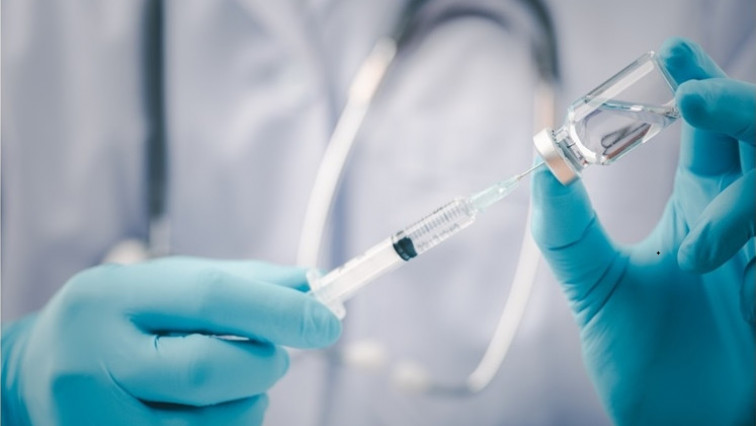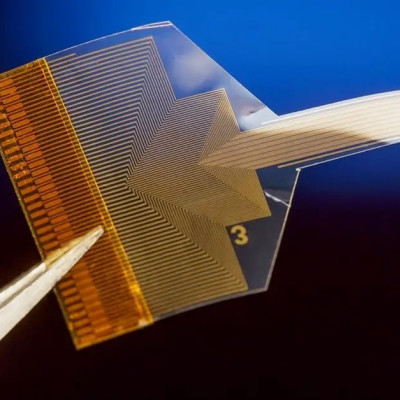Background
Most human vaccines are based on inactivated viruses or viral proteins. The former are typically associated with a strong immune response since they present multiple antigens that stimulate both B and T cell responses. Conversely, protein-based vaccines are less immunogenic, and as a result, a greater number of doses may be required. Alternatively, adjuvants are used to improve the immune response.
The use of a vaccine peptide usually entails the conjugation of the antigenic epitope to a more immunogenic carrier protein, or mounting the epitopes on a multivalent nanostructure. Among the latter, novel carbon-based materials are of great interest, including fullerene, graphene, carbon nanotubes, carbon quantum dots, and nanodiamonds.
In particular, nanodiamonds (NDs) are attractive since they are the least toxic of these nanostructures but have been shown to act in several ways to efficiently inhibit E. coli biofilm formation. Many attempts have been made to use them in vaccine development, with the size of the diamond nanoparticles (NP) being an important consideration.
NETosis and inflammation
NPs should be less than 40 nm in order to be trapped within neutrophil-extracellular traps (NETs), networks of neutrophil DNA extruded in order to neutralize the pathogen. The NETosis, in turn, induces inflammation at the vaccination site.
Such inflammation resolves spontaneously, with the inflammatory stimulus being trapped within the NETs. This reaction is seen with alum adjuvant as well, as well as natural NPs such as the needle-like crystals of monosodium urate found in gout, which cause robust but self-limiting inflammation.
Earlier researchers have described this mechanism and emphasized the need for neutrophils in order to initiate the inflammation that is responsible for the enhanced immunogenicity of aluminum oxide nanowires when used as adjuvants.
ND-conjugated pancoronavirus peptide
An earlier study shows that when heptad repeat 1 (HR1) peptide inhibitors were conjugated with gold NPs, the resulting structures were able to inhibit membrane fusion between the MERS-CoV and host cells. In the current study, a set of HR2 peptide inhibitors was used, either covalently bound to the surface of NDs or just mixed with the NDs to allow them to bind to its surface.
Thus, inhibition of HR1/HR2-mediated membrane fusion is an effective method of preventing viral entry.
The current work used “react and inject” technology as the basis for the vaccines used. A synthetic pan-coronavirus peptide called heptad repeat 2 (HR2) peptide was employed. This is 81% identical to that found in the Middle-East respiratory syndrome coronavirus (MERS-CoV), and only 46% to the SARS-CoV-2 peptide.
This peptide can elicit cross-immunity between coronaviruses.
In rodent experiments, synthetic pancoronaviral peptide-conjugated NDs were able to readily induce antibody responses following injection. None of the tested carbon particles showed cytotoxic effects in cultured cells at 24 hours. However, all NDs conjugated with ovalbumin-induced a robust immunomodulatory response, leading to specific antibody production.
Superior immunogenicity of NDs
NDs were more immunogenic than other carbon-based NPs, such as carbon quantum dots (CQDs) and pegylated graphene oxide (GO-PEG). The antibody titer with the latter two was similar to that achieved with the commercial adjuvant aluminum oxyhydroxide (AlOOH), but NDs produced significantly higher antibody levels.
In fact, the titers elicited with NDs are similar to that achieved with the use of the strong adjuvant CFA/IFA, but without the cytotoxicity of the latter. In fact, NDs produce only self-limiting inflammation at the injection site.
The researchers found that the ND-conjugated pancoronaviral peptide induced the production of immunoglobulins, both IgM and IgG, against itself, reaching a titer of ¼,000 after two doses. After 28 days, the IgM acute-phase antibodies were low in titer, ensuring that the risk of immune complex formation is low, and thus preventing potential kidney damage.
This formulation also elicited a cellular immune reaction. The inflammation induced by this formulation was also determined to be a CD4+ T-helper cell type 1 (Th1) response, associated with the production of interferon-γ.
Immunized mice were found to display a delayed-type hypersensitivity (DTH) reaction, peaking at 24 hours.
The NDs conjugated to the pancoronaviral peptide also caused enhanced antibody formation and were swallowed up by the NETosis on contact with neutrophils in the body. The team of scientists observed that once the conjugated peptide was injected, it was sequestered within neutrophils via NETs. The sticky DNA led to neutrophil aggregation, partitioning it from the surrounding tissues.
The robust immune response is thought to be due to the formation of a granuloma around the nanoadjuvant, perceived as a foreign body, which stimulates neutrophils and induces NETosis. This traps the nanodiamond conjugate and limits it to the area of injection without its spread to the circulation or other organs.
Durable immune response
With the ND-pancoronaviral peptide, IgG antibody titers were sustained for up to 120 days, at a higher level than with the use of CFA/IFA adjuvant. The antigen was found to be highly reactive with convalescent serum from COVID-19 patients, indicating its potential as an immunization agent.
This formulation elicited multiple antibodies directed against a host of epitopes on the spike protein of SARS-CoV-2. Among these epitopes, some would belong to conserved antigens among different coronavirus strains and could potentially induce a robust immune response against such unknown strains as well as the known ones.
However, the researchers point out that the antibodies elicited by this formulation, though high in titer, could not neutralize infection by MERS-CoV, because they do not target the receptor-binding domain (RBD) of the spike protein, nor the secondary neutralizing target, the HR1-HR2 region. These are the major sites of neutralization, unlike the HR2 region bound by the current formulation.
What are the implications?
ND-conjugated peptides can be used to produce emergency vaccines against many emerging viruses or bacteria, since the peptide can be easily tailored according to the genome of the pathogen of interest. Though they do not neutralize viral replication, and so cannot provide sterilizing immunity where the virus cannot be transmitted from the infected patient, they do provide high and sustained antibody titers, which are likely to be protective against serious disease.
Both NPs and peptide synthetic equipment can be transported to remote locations with a high risk of emerging pathogens, to reduce the risk of transmission of such agents, and to facilitate the local manufacture of vaccines on an emergency basis, thus preventing the escalation of the situation.
Read the original article on News Medical.







